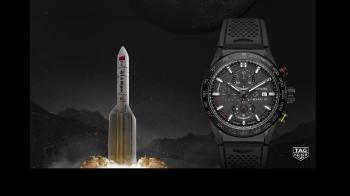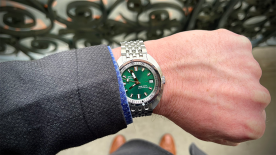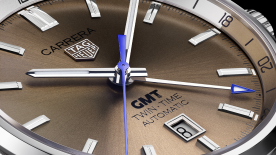It’s great to see a burst of galactic activity kick off the year in which we celebrate the 50th anniversary of mankind’s first steps on the moon. On 1st January, NASA’s New Horizons probe passed by the furthest object in our solar system ever to be visited by a spacecraft, sending images of Ultima Thule four billion miles across the galaxy back to Earth. The next day, at 10.26am Beijing time, China’s Chang’E-4 mission made the first-ever landing on the far side of the moon.
Both events show how space exploration has evolved over the past fifty years. They also hint at the difficulties watch brands now face in capitalizing on it for their marketing activities. Omega has an unparalleled record with its Speedmaster, which was chosen as the official watch of NASA and has been accompanying astronauts into the void ever since. But the two missions of the past week were both unmanned and the photos sent back to Earth were not of astronauts proudly holding flags and wearing manually-wound wristwatches but of a snowman-shaped object the size of Washington, DC and a hitherto unknown, empty lunar landscape.


As a partner of China’s Lunar Exploration Programme (CLEP), TAG Heuer will celebrate the success of the Chang’E-4 mission with its Chinese brand ambassadors and representatives of the CLEP at the China Science and Technology Museum later this week. The brand has been a partner of the mission since 2016 and last year presented two CLEP watches at Baselworld: a limited edition of 100 Carrera Calibre Heuer 01 chronographs and an Aquaracer Calibre 5 with moon disc at 9 o’clock. Like the partnership itself, these watches are targeted more towards the local audience in China, restricting the potential audience to a mere 1.3 billion people.
There are, however, other opportunities for watch brands looking to cash in on the 2019 space boom. India’s Space Research Organisation is planning no fewer than 32 missions in 2019, including its first attempt at a powered lunar landing with the Chandrayaan-2 mission, which is scheduled for early 2019. With no sign of an official timekeeper or official watch, could Switzerland’s second-oldest watch brand fire up the patriotism of its Indian owners (the Tata Group) to persuade them to team up with this mission? Favre-Leuba already has the perfect hashtag in place: #conqueringfrontiers.
The fact that such opportunities have not already been snatched up may be due to the way that more and more space missions are now funded. The Google Lunar XPRIZE offered 30 million US dollars to the first non-governmental team to land a rover on the moon and send back high-definition video. Lunar missions thus shifted from the public to the private sector. Despite Google withdrawing its sponsorship of the prize, privately-funded Space IL from Israel plans to launch the first-ever non-governmental lunar mission in February on a SpaceX Falcon 9 rocket. It could be the perfect opportunity for Itay Noy to put independent watchmaking from Israel on the map.
Private sector companies like SpaceX are increasingly responsible for the heavy lifting that gets the payloads for these missions into space. These profitable businesses (SpaceX’s valuation is greater than that of Switzerland’s annual watch exports) have also gained valuable experience that has helped them plan their own manned space missions. Last year SpaceX confirmed that it had sold a flight around the moon to Japanese billionaire Yusaku Maezawa. But given the size of the company, and its founder’s ego, it has little room (or need) for any corporate sponsors.
The first human beings who flew around the dark side of the moon did so out of necessity rather than choice nearly half a century ago. For the crew of Apollo 13 it was the only hope of getting the slingshot they needed for a safe return to Earth. After a technical fault on board, they cut power to all but the most essential equipment, meaning that they had to rely on an Omega Speedmaster to time a 14-second engine burn to get their trajectory right. The fact that the humble Moon Watch is still part of the core Omega collection fifty years later is testament to the enduring appeal of the watch and such legendary stories. Will the second crew to make the journey wear Speedies as a touch of nostalgia? We’ll have to wait until at least 2023 to find out.









